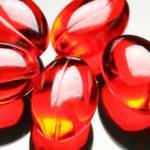Importance of Vitamin E for Horses

Vitamin E has numerous functions in the body, many of which are still not completely understood. Vitamin E is essential for the integrity and optimum function of reproductive, muscular, circulatory, nervous, and immune systems.
Its action as a natural antioxidant is seen as the underlying factor of most vitamin E functions. Vitamin E is considered to be the most effective natural lipid-soluble chain-breaking antioxidant. The action of vitamin E is very important in cell membranes, protecting them from peroxidative damage. This is especially important in the mitochondrial membrane, where enzymes involved in respiratory chain energy production are located. Selenium, like vitamin E, also acts to prevent lipid peroxidation, but with differing mechanisms. The two complement each other, one appearing to be able to compensate for the absence of the other to a certain extent. Signs of vitamin E deficiency, such as nutritional muscular dystrophy, are often the same as those seen with selenium deficiency. Other diseases associated with low serum vitamin E include degenerative myelopathy and degenerative myeloencephalopathy.
There are at least eight forms of vitamin E found widely distributed in nature: four tocopherols and four tocotrienols. The majority of vitamin E activity in animal tissues is generally assumed to be alpha-tocopherol and when it is present it is used preferentially. Tocopherols are extremely resistant to heat but readily oxidized. Natural vitamin E is subject to destruction by oxidation, a process that is accelerated by heat, moisture, rancid fat, and certain trace minerals. Horses have the capability to store much less vitamin E than vitamin A. However, stores are thought to be able to compensate for about four months or more of inadequate vitamin E intake.
Vitamin E is abundant in green growing pastures, particularly in alfalfa (lucerne). The content diminishes with maturation, especially after the plants go to seed. Harvesting the forage diminishes the quantity of vitamin E present, and storage of the hay further decreases the amount of vitamin A by as much as 50% in the first month. Vitamin E is abundant in the germ of grains and oils pressed from the germ. Vegetable oils such as corn and soybean oil are relatively high in vitamin E. In practice, the vitamin E content of other feedstuffs is variable and not readily predictable because of handling and storage time. Therefore, it is common practice to supplement animal feeds with vitamin E. Since esterification stabilizes vitamin E, commercial supplements usually contain tocopheryl acetates.
Vitamin E appears to be the most researched vitamin at this time in production animals. Several studies have reported evidence of oxidative stress occurring with exercise in both humans and rodents. Since the main function of vitamin E is to protect the cell against peroxidative damage, lipid peroxidation as a result of exercise may be influenced by the concentration of vitamin E present in the diet. Signs of vitamin E toxicity in the horse have not been produced.








